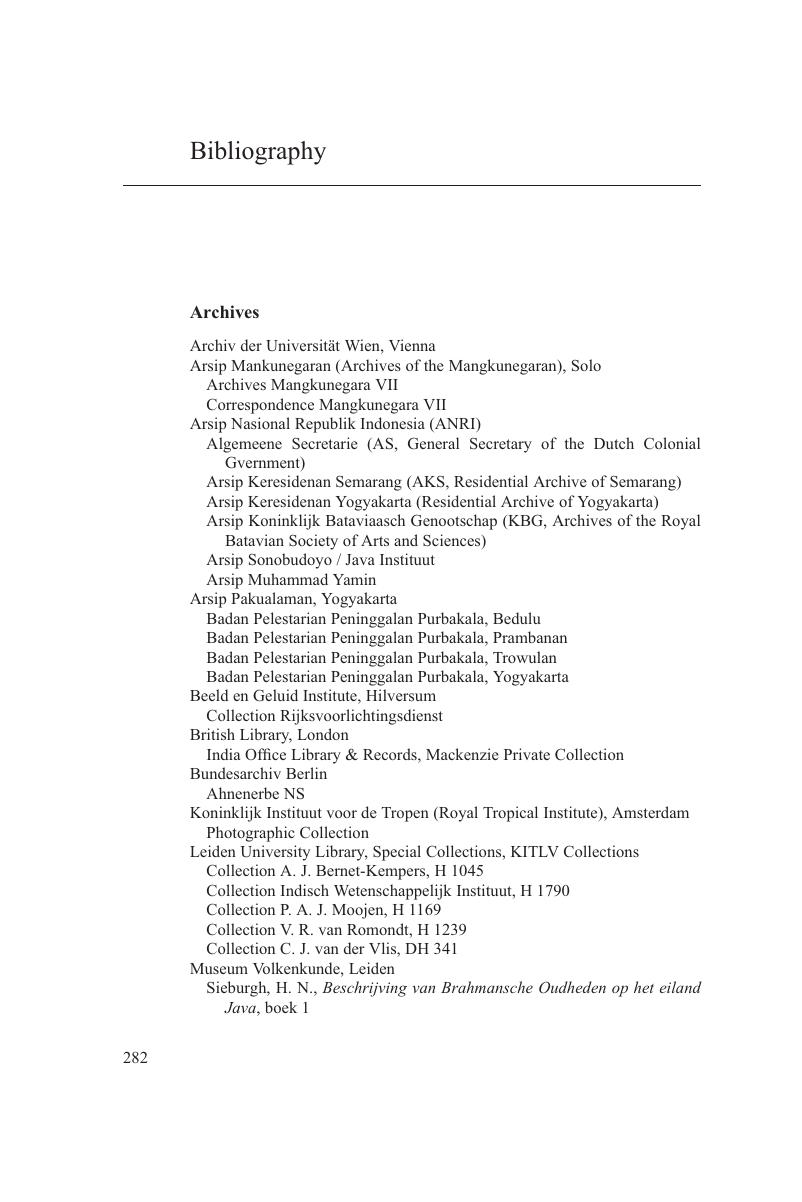Book contents
- The Politics of Heritage in Indonesia
- Asian Connections
- The Politics of Heritage in Indonesia
- Copyright page
- Contents
- Figures
- Preface and Acknowledgements
- Abbreviations
- Introduction: Towards a Mobile History of Heritage Formation in Asia
- 1 Site Interventions, Knowledge Networks, and Changing Loyalties on Java, 1800–1850s
- 2 Exchange, Protection, and the Social Life of Java’s Antiquities, 1860s–1910s
- 3 Great Sacred Majapahit: Biographies of a Javanese Site in the Nineteenth Century
- 4 Greater Majapahit: the Makings of a Proto-Indonesian Site across Decolonisation, 1900s–1950s
- 5 The Prehistoric Cultures and Historic Past of South Sumatra on the Move
- 6 Resurrecting Siva, Expanding Local Pasts: Centralisation and the Forces of Imagination across War and Regime Change, 1920s–1950s
- 7 Fragility, Losing, and Anxieties over Loss: Difficult Pasts in Wider Asian and Global Contexts
- Epilogue: Heritage Sites, Difficult Histories, and ‘Hidden Forces’ in Post-Colonial Indonesia
- Bibliography
- Index
- References
Bibliography
Published online by Cambridge University Press: 24 December 2019
- The Politics of Heritage in Indonesia
- Asian Connections
- The Politics of Heritage in Indonesia
- Copyright page
- Contents
- Figures
- Preface and Acknowledgements
- Abbreviations
- Introduction: Towards a Mobile History of Heritage Formation in Asia
- 1 Site Interventions, Knowledge Networks, and Changing Loyalties on Java, 1800–1850s
- 2 Exchange, Protection, and the Social Life of Java’s Antiquities, 1860s–1910s
- 3 Great Sacred Majapahit: Biographies of a Javanese Site in the Nineteenth Century
- 4 Greater Majapahit: the Makings of a Proto-Indonesian Site across Decolonisation, 1900s–1950s
- 5 The Prehistoric Cultures and Historic Past of South Sumatra on the Move
- 6 Resurrecting Siva, Expanding Local Pasts: Centralisation and the Forces of Imagination across War and Regime Change, 1920s–1950s
- 7 Fragility, Losing, and Anxieties over Loss: Difficult Pasts in Wider Asian and Global Contexts
- Epilogue: Heritage Sites, Difficult Histories, and ‘Hidden Forces’ in Post-Colonial Indonesia
- Bibliography
- Index
- References
Summary

- Type
- Chapter
- Information
- The Politics of Heritage in IndonesiaA Cultural History, pp. 282 - 313Publisher: Cambridge University PressPrint publication year: 2020

